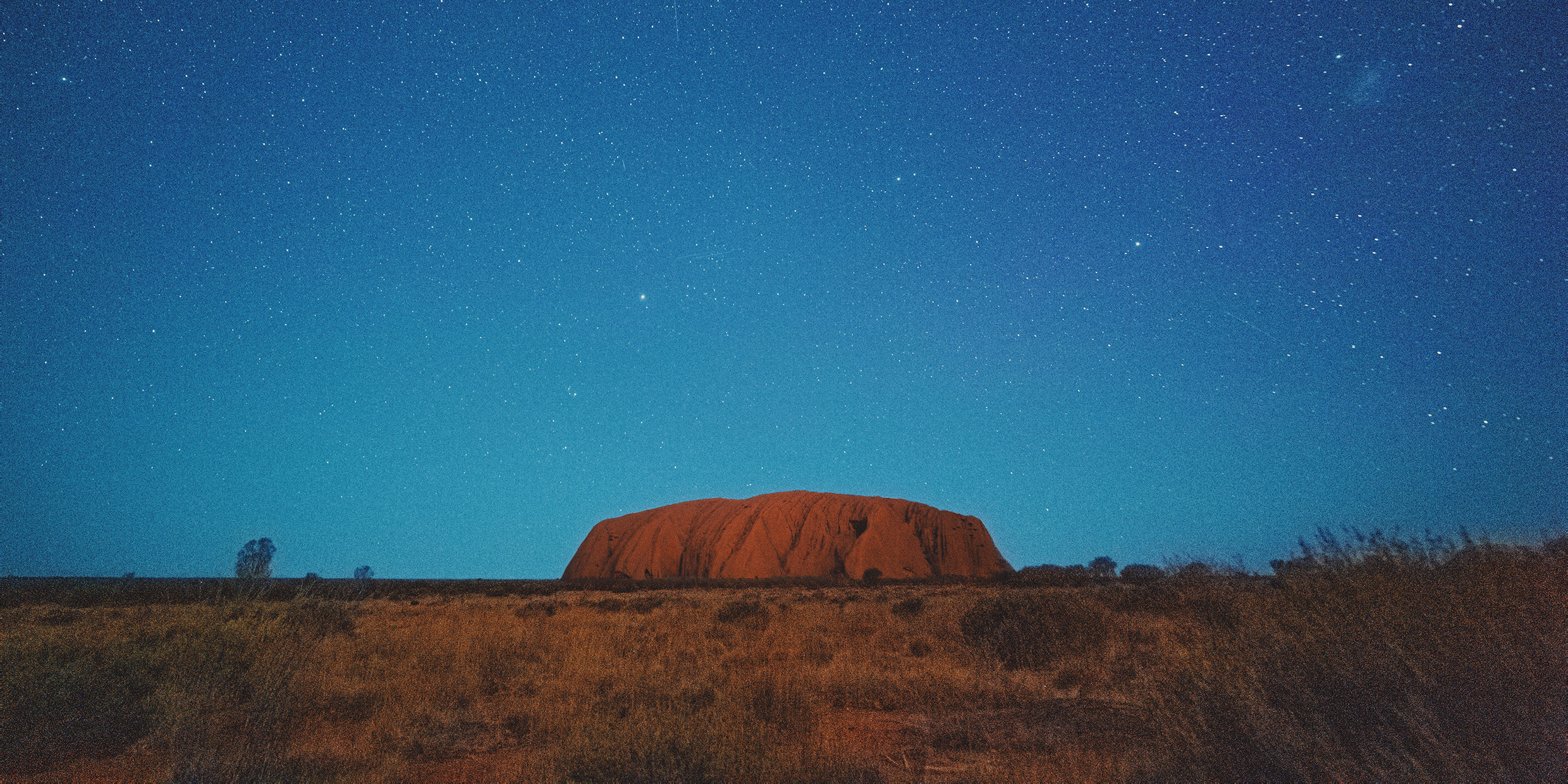Originally published 8 June 2008
In early 1986, Sky & Telescope magazine offered me a free place on their Comet Halley tour to Ayers Rock in the Australian outback. In return, I was to write a feature story on the trip and the comet. Why Ayers Rock? At the comet’s closest approach to Earth it was primarily a southern hemisphere object, and nowhere else in the southern hemisphere were skies expected to be as clear and dark as at Ayers Rock.
The other folks on the tour were a remarkable group of amateur astronomers who lugged along a truckload of optical gear. Among them were Sky & Tel’s own Dennis di Cicco and Roger Sinnott, and the legendary amateur astrophotographer Johnny Horne of North Carolina. Oh, what nights! Under the darkest of skies, the comet blazed in a sea of stars such as many of us had never seen — the Southern Cross, Orion standing on his head, the central Milky Way a river of light, the Large and Small Magellanic Clouds. The clicks of shutters, the beeps of timers, the whirrs of drive mechanisms, and the tick-tock of Sinnott’s cuckoo-clock-powered camera platform were like the night sounds of an exotic desert fauna.
The comet rose in a sky so clear that we spotted the coma before half of its diameter had cleared the distant horizon. Even against the backdrop of the Milky Way the comet was conspicuous. The tail, however, was slight, and difficult to trace for more than a few degrees. For several nights Halley made its way along the curved body of the Scorpion and across the brightest stream of the Milky Way. Then, in our second week in the southern hemisphere, it broke free of the Milky Way into the black sky of the constellation Lupus.
There were plenty of objects in the sky — many of them new to most of us — by which to gauge the comet’s brightness. In binoculars, Halley bore a strong likeness to the globular clusters that generously decorate this part of the heavens. The cluster Messier 4 in Scorpius was visually similar to Halley, but not nearly as bright. While the comet was in the Milky Way it seemed an almost perfect twin to Omega Centauri, the wonderful naked-eye globular cluster in the Centaur. When it slipped out of the Milky Way, it clearly outshone the cluster. But Halley was not by any means the brightest comet I had seen, and a far cry from the media brouhaha that had preceded its coming.
The Pitjantjatjara aborigines who live near Ayers Rock call comets Wurluru. Wurluru is a very large man who lives alone and sometimes hurls his spears across the heavens. He is a ferocious and powerful figure, greatly to be feared, but not without merciful qualities. The aborigines say that looking at Wurluru for a long time will cause the eyes to spin. By the end of our time at Ayers Rock all eyes were spinning.
So where is the comet now? Halley is crossing the orbit of Neptune (although not in the same plane, and Neptune itself is on the opposite side of its orbit), moving ever more slowly as it climbs to the top of its track. As seen from the orbiting Earth, it seems to be corkscrewing its way through the constellation Hydra. In 2024 it will reach its apogee between the orbits of Neptune and Pluto, like a ball thrown up into the air, then start falling back toward the Sun. It will make its closest approach to Earth on July 28, 2061. It will not be a particularly favorable apparition, especially for observers in the northern hemisphere. Tom might be around to totter out into the yard for a look, but I will be long gone.
With its 76-year period, few of us get more than one peek at Comet Halley. One companion on our Australian trip had seen the apparition of 1910, Clarence Custer, a pioneer amateur astrophotographer. He was 4 years old. My own favorite memory of Halley was from a lagoon in Tahiti on the trip home from Australia. I was floating on my back alone, under a gorgeously dark sky, and the comet appeared to my eye even brighter than at Ayers Rock. I drifted in sea and sky and felt I had been transported with Wurluru into the aboriginal Dreamtime.
One night in late April, back in Massachusetts. I showed the retreating comet to a teenaged Tom. It was again a telescopic object, rapidly fleeing from the Earth, and looked in the eyepiece of the little telescope like a smudged star. “Is that it?” he asked. Yep,” I said, “that’s it.” He took another disappointed look. “That’s useless,” he said in the lingo of his youth. Later I thought of something Samuel Johnson wrote about poets that might apply equally to amateur astronomers: “To a poet, nothing can be useless. Whatever is beautiful, and whatever is dreadful, must be familiar to his imagination: he must be conversant with all that is awfully vast and elegantly little.”



